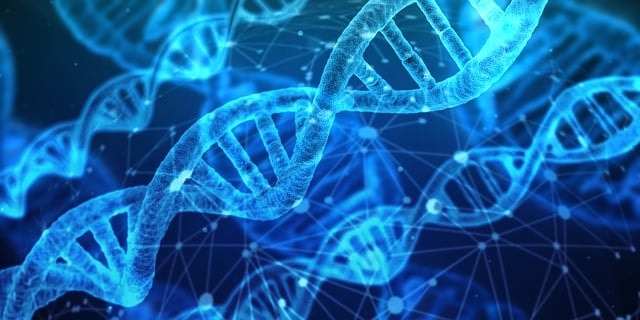
Testosterone Replacement Therapy (TRT), also known as androgen replacement therapy (ART), is a medical treatment designed to address low testosterone levels in men. As men age, their testosterone levels naturally decline, leading to various physical and psychological changes. This article delves into what TRT is, its benefits, potential risks, and the considerations individuals should keep in mind when considering this therapy.
What is Testosterone?
Testosterone is a hormone primarily produced in the testicles. It plays a key role in male growth and development, influencing muscle mass, bone density, red blood cell production, and the maintenance of libido and sexual function. It also affects mood and energy levels.
Testosterone deficiency can negatively impact these bodily functions, leading to reduced muscle mass, lower bone density, decreased red blood cell production, diminished libido and sexual function, and changes in mood and energy levels.
What Causes Low Testosterone?
Low testosterone, or hypogonadism, can be caused by several factors including:
- Aging: Testosterone levels typically decrease by about 1% per year after the age of 30.
- Medical Conditions: Conditions such as diabetes, obesity, and hormonal disorders can lead to low testosterone.
- Injury or Infection: Damage to the testicles or pituitary gland can impair testosterone production.
- Medications: Certain medications, including opioids and steroids, can affect testosterone levels.
A blood test is essential for diagnosing low testosterone levels and determining the appropriate treatment.
Symptoms of Low Testosterone
Symptoms of low testosterone can vary but commonly include:
- Decreased libido and sexual performance
- Erectile dysfunction
- Fatigue and reduced energy levels
- Depression and mood changes
- Reduced muscle mass and strength
- Increased body fat
- Osteoporosis or reduced bone density
What is Testosterone Replacement Therapy (TRT)?
Testosterone treatment, also known as TRT, involves the administration of synthetic testosterone to restore levels to a normal range. This can be achieved through various methods:
- Injections: Testosterone can be injected directly into the muscles.
- Transdermal Patches or Gels: Applied to the skin, these allow testosterone to be absorbed into the bloodstream.
- Oral Medications: Pills or tablets that can be taken orally.
- Implants: Pellets inserted under the skin that release testosterone over time.
Benefits of TRT
The benefits of testosterone therapy (TRT) can be substantial, particularly for those with clinically diagnosed low testosterone levels:
- Improved Libido and Sexual Function: Many men experience an increase in sex drive and improved sexual performance.
- Increased Muscle Mass and Strength: TRT can help in gaining muscle and improving physical performance.
- Enhanced Mood and Mental Clarity: Many individuals report better mood, reduced depression, and improved cognitive function.
- Increased Energy Levels: Enhanced vitality and reduced fatigue are common benefits.
- Bone Density: TRT can help in maintaining or increasing bone density, reducing the risk of osteoporosis.
Potential Risks and Side Effects
Like any medical treatment, TRT comes with potential risks and side effects:
- Cardiovascular Issues: Some studies suggest a potential increase in the risk of heart attacks and strokes. TRT can also lead to an increased risk of cardiovascular events and other systemic effects such as water retention and aggressive behavior.
- Prostate Health: TRT can affect prostate health and may increase the risk of prostate cancer. Although studies have found no increase in prostate cancer risk among men who take testosterone compared to men who don’t, more research is needed on the long-term effects of TRT.
- Benign Prostatic Hyperplasia (BPH): TRT may worsen benign prostatic hyperplasia (BPH) in men with symptomatic hypogonadism, so this risk should be carefully considered.
- Sleep Apnea: Worsening of obstructive sleep apnea has been reported in some cases, particularly in patients with certain comorbidities.
- Blood Clots: There is a potential risk of developing blood clots. TRT can also lead to an increase in red blood cell count, known as polycythemia, which necessitates regular monitoring through blood tests.
- Skin Reactions: Transdermal applications can cause skin irritation.
Considerations Before Starting TRT
Before starting TRT, also known as androgen replacement therapy, it is crucial to undergo a thorough evaluation by a healthcare provider. This typically includes:
- Blood Tests: To confirm low testosterone levels and rule out other potential causes of symptoms.
- Medical History and Physical Exam: To assess overall health and identify any underlying conditions that might contraindicate TRT.
- Discussion of Risks and Benefits: Understanding the potential benefits and risks to make an informed decision.
Conclusion
Testosterone Replacement Therapy can be a viable option for men experiencing symptoms of low testosterone, offering numerous benefits from improved sexual function to enhanced mood and energy levels. However, it is essential to approach TRT with a clear understanding of the potential risks and to engage in ongoing medical supervision. Always consult with a healthcare provider to determine if TRT is the right choice for your individual health needs.
